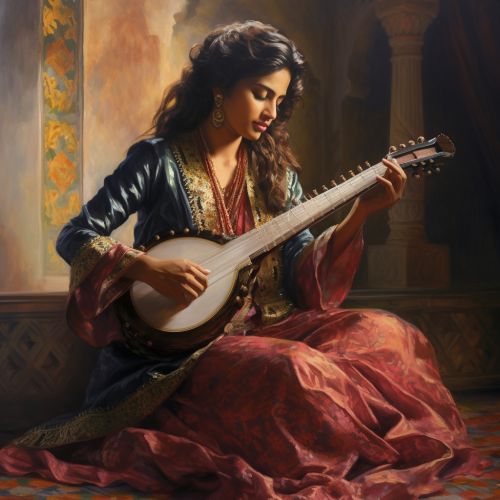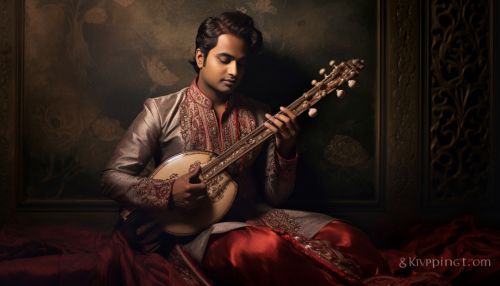Raaga
Introduction
A raaga is a melodic framework for improvisation akin to a melodic mode in Indian classical music. While the raaga is a remarkable and central feature of the classical music tradition, it has no direct translation to concepts in the classical European music tradition. Each raaga is an array of melodic structures with musical motifs, considered in the Indian tradition to have the ability to "color the mind" and affect the emotions of the audience.


Etymology and History
The term raaga comes from Sanskrit, and literally means "coloring" or "dyeing". The term also connotes an emotional state referring to any feeling or passion in the Indian arts context. In the context of music, a raaga refers to a combination of musical notes that have a certain melodic structure, set to rhythms of a particular beat.
The concept of raaga is ancient, with its origins traced to the Vedic period, where hymns were sung in a melodic framework. The concept evolved with the emergence of the classical music tradition in India, and has been a crucial component of Indian music ever since.
Structure
A raaga has a given set of notes, on a scale, ordered in melodies with a unique aesthetic. In the Indian musical tradition, there are seven basic notes, or swaras, which correspond to the Western solfege. These are: Sa (Shadja), Re (Rishabh), Ga (Gandhar), Ma (Madhyam), Pa (Pancham), Dha (Dhaivat), and Ni (Nishad). However, the manner in which these notes are approached and rendered in musical phrases and the mood they convey are considered the key in defining a raaga.
In addition to the basic notes, a raaga in the Indian classical tradition has a unique combination of characteristics such as arohana (ascending scale), avarohana (descending scale), vadi (most important note), samvadi (second most important note), pakad (catch phrase), and alap (introduction). These characteristics offer a structured framework for the musician to improvise and express.
Types of Raagas
There are hundreds of raagas, which are classified in various ways, such as Jaati, Thaat, and Samay. Jaati refers to the number of notes used in the raaga. Thaat is the system of classification for raagas based on their characteristic features. Samay is a unique concept in Indian classical music where certain raagas are associated with different times of the day or seasons.
Performance
The performance of a raaga involves layering improvised melodies within the raaga's structure. The improvisation is guided by rules of the raaga. A typical performance of a raaga in Indian classical music will follow a general sequence of alap, jor, jhala, gat or bandish.
Influence and Usage
Raagas have found their way into many forms of music, including folk, pop, and film music. They are also used in other art forms such as dance and theatre. The use of raagas in these art forms is a testament to their versatility and the depth of emotion they can convey.
